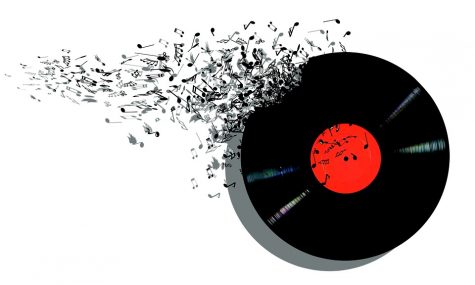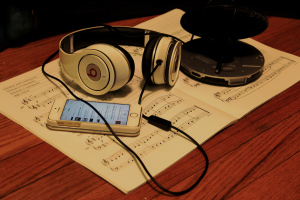Music changes through the ages
More stories from Grace Marion
The year is 2016, and, like the generations before them, the young people of today listen to music-and lots of it. Rather than walking to the local record store, as their parents once did to tune into something new, today’s teens and young adults simply open their phones and click on their icon of choice. With this selection of songs, more has changed than just the venue.
If art is a reflection of society, an analysis of America’s changing music taste has the ability to provide insight into our shifting cultural atmosphere.
According to a study by Contently, the popular music of the years 1995 and 2015 used more references to sexual content than any other years within the study, which studied a particular calendar week every 10 years between 1965 and 2015, and showed a relative increase in such over time.
This increase in references to sexual activity over time can be said to reflect how American society has become more open about such, as is shown through the University of Chicago’s NORC studies regarding Americans’ attitudes through particular issues over time, which shows declining rates in disapproval for all sexual behaviors, excluding extramarital affairs.
Songs from 2005 used more profane language than any other year. The most frequent themes from this year included sex, street life, freedom, lust, loneliness, partying, love and money according to the same Contently study.
The rate at which violence was referenced is tied between 1965, 1985, and 1995 for highest frequency. The most common themes of the 1965 sample were love, escape, loneliness, lessons and loss. The year 1985 brought unity, lust, nostalgia, love, dancing and partying. The year 1995 brought along partying, sex, love, freedom, and street life.
Tied for most frequent references to drugs and alcohol are 2005 and 2015, more than doubling the amount of references from the 1965 and 1975 samples. The most common themes of the music sample from 2015 in the Contently study were love, partying, lust, life, loss, and being awesome.
As time went on, many genres developed within the United States and around the world. Although the development of these genres was not always reflected into the mainstream, they still had a great effect on American society.

Classical music evolved into folk and spiritual music prior to, and during, America’s great awakening in the 1700s, prior to its founding as a nation. Later, during the Civil War, both the North and South created popular melodies for patriotic means.
Finally, late in the 19th century, ragtime evolved. From this came jazz, blues, and big band swing. In the early 1940s, blues became the basis for rock and roll, while jazz evolved into bebop. The 1940s also saw the first commercial successes of appalachian folk music, which would later lead to the development of the country music played today.
In the 1950s, blues led to gospel and R&B music. Latin music, brought in from Cuba, also became somewhat popular in the 1950s, along with cajun and creole tunes.
Political causes became a common feature in music throughout the 1960s. Girl groups, surf music, hot rod rock, psychedelic rock, progressive rock, and soul all arose–in part–during this period. Soul and funk also became quite popular.
In the 1970s, heavy metal, along with its subgenres of glam rock and country rock, came to the forefront. Outlaw country, hip hop, punk, disco, and Philly soul also became popular. The same trends continued into the 80s, with hip hop reaching the top of the charts, and gangster rap emerging.
The 1990s saw grunge, and about two dozen other subgenres of rock, form in full. East coast rap styles were replaced by those of the West, and techno music started to become popular. Indie and garage became the most popular forms of rock going into the 2000s, and contemporary, electronic, and R&B eventually led to the development of the array of sounds we hear today.
In the late 1950s into the 1960s, Americans throughout the country still hopped their socks to the melodies of The Beatles, Supremes, Rolling Stones, Four Seasons, Monkees and–the one and only–Elvis Presley. The following decade’s billboard hits consisted of Elton John, The Bee Gees, Paul McCartney and The Wings, Stevie Wonder, The Jackson 5, KC & The Sunshine Band, and Barbra Streisand.
With the 1980s came Whitney Houston, Madonna, Phil Collins, Hall and Oats, Stevie Wonder, Prince, Bon Jovi, and the Jackson 5 (minus 4). After the 1980s came Mariah Carey, Boyz II Men, TLC, Celine Dion, Puff Daddy, and Monica–in addition to a sixth Jackson, Janet.
The 2000s ushered in Usher, Rihanna, Beyonce, Nelly, Ludacris, Alicia Keys, Justin Timberlake, and 50 Cent. Now, the most popular artists are Katy Perry, Bruno Mars, Taylor Swift, Adele, Eminem, Ke$ha, Justin Bieber, Drake and Rihanna based on how many of their singles have reached number one on the Billboard Hot 100 lists.
These changes in popular artistry throughout the decades may be a reflection on changing technology in the music industry throughout the decades, as it can be easily noted that Beatles didn’t quite have the same auto-tuned tone of much of the music of the early 2000s.












